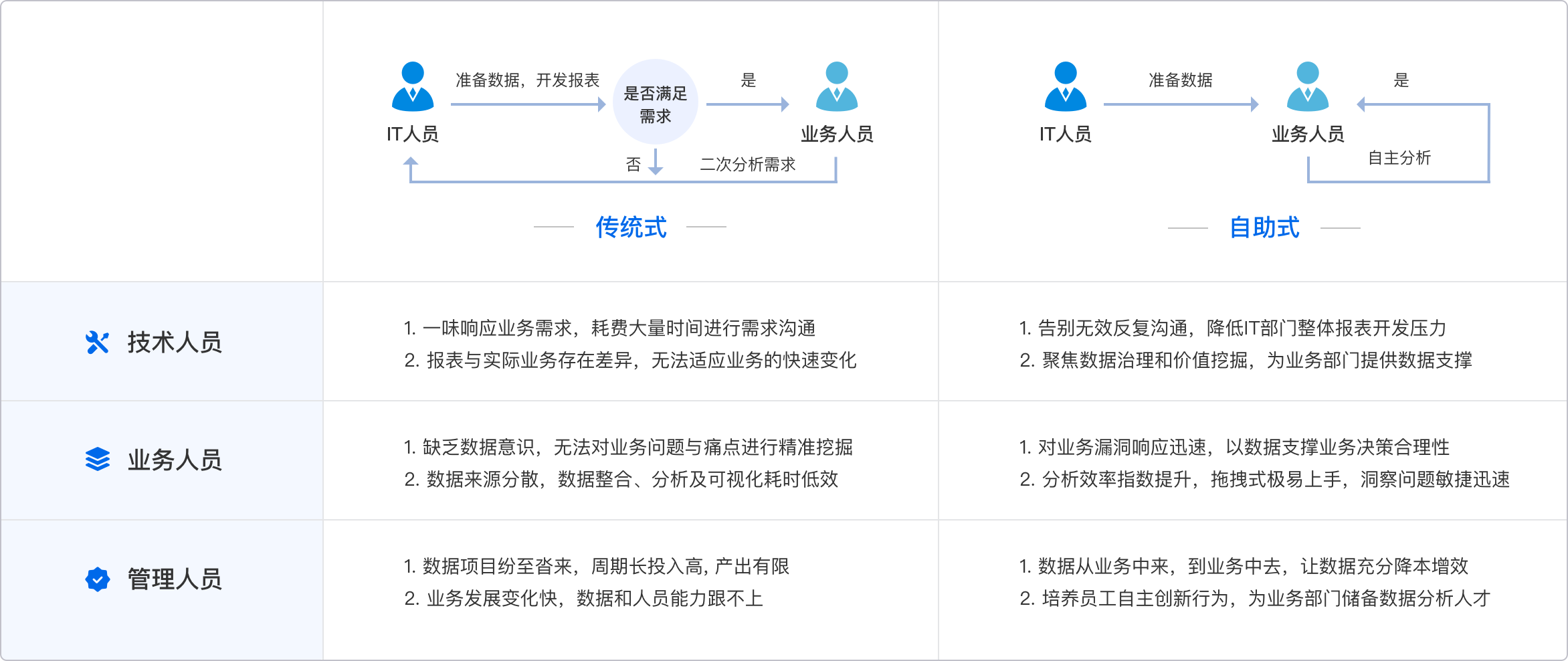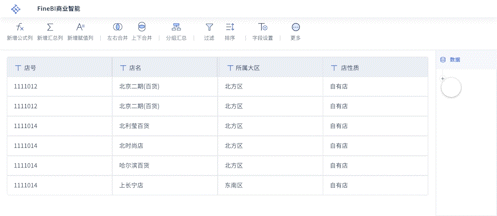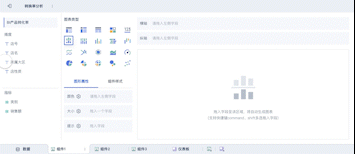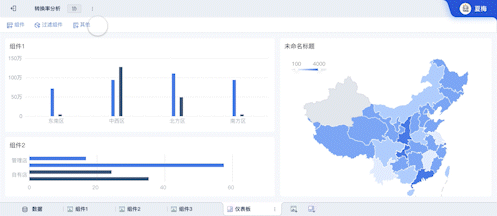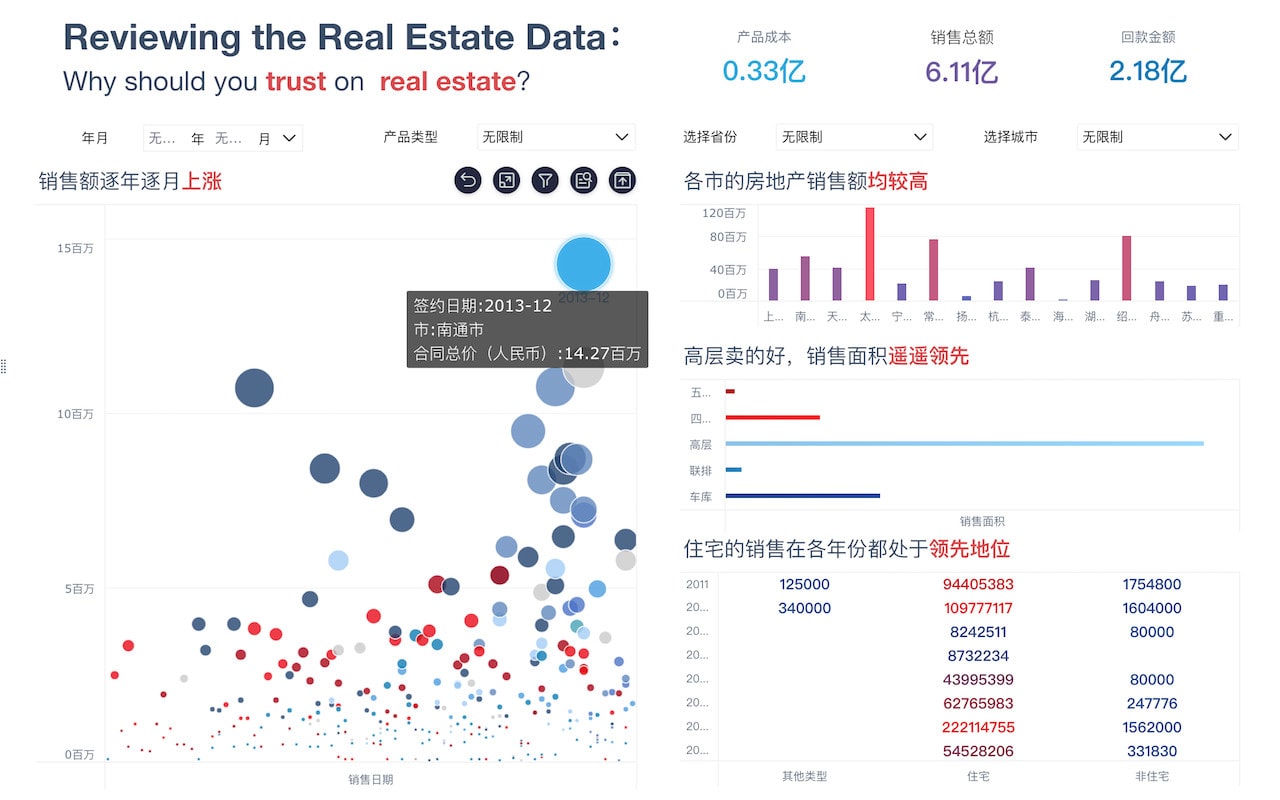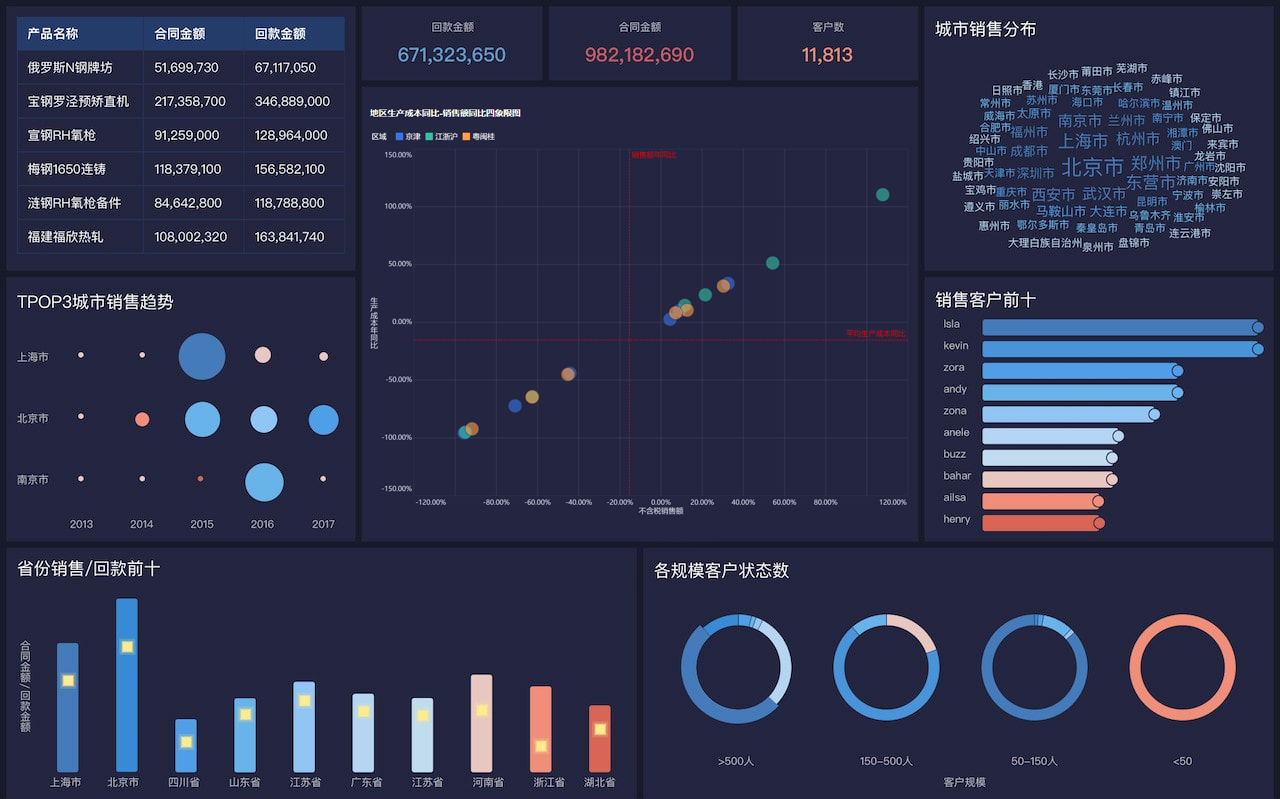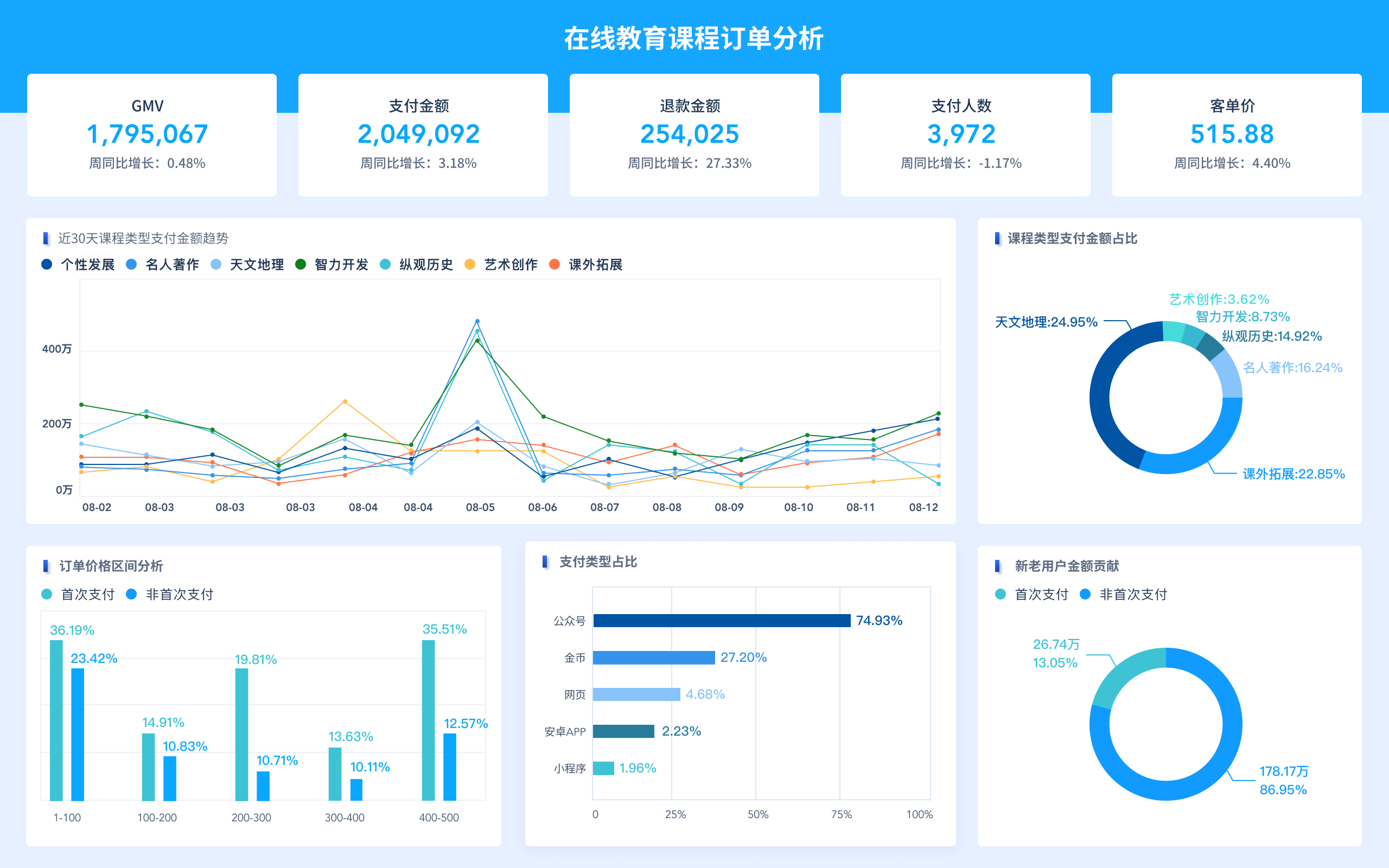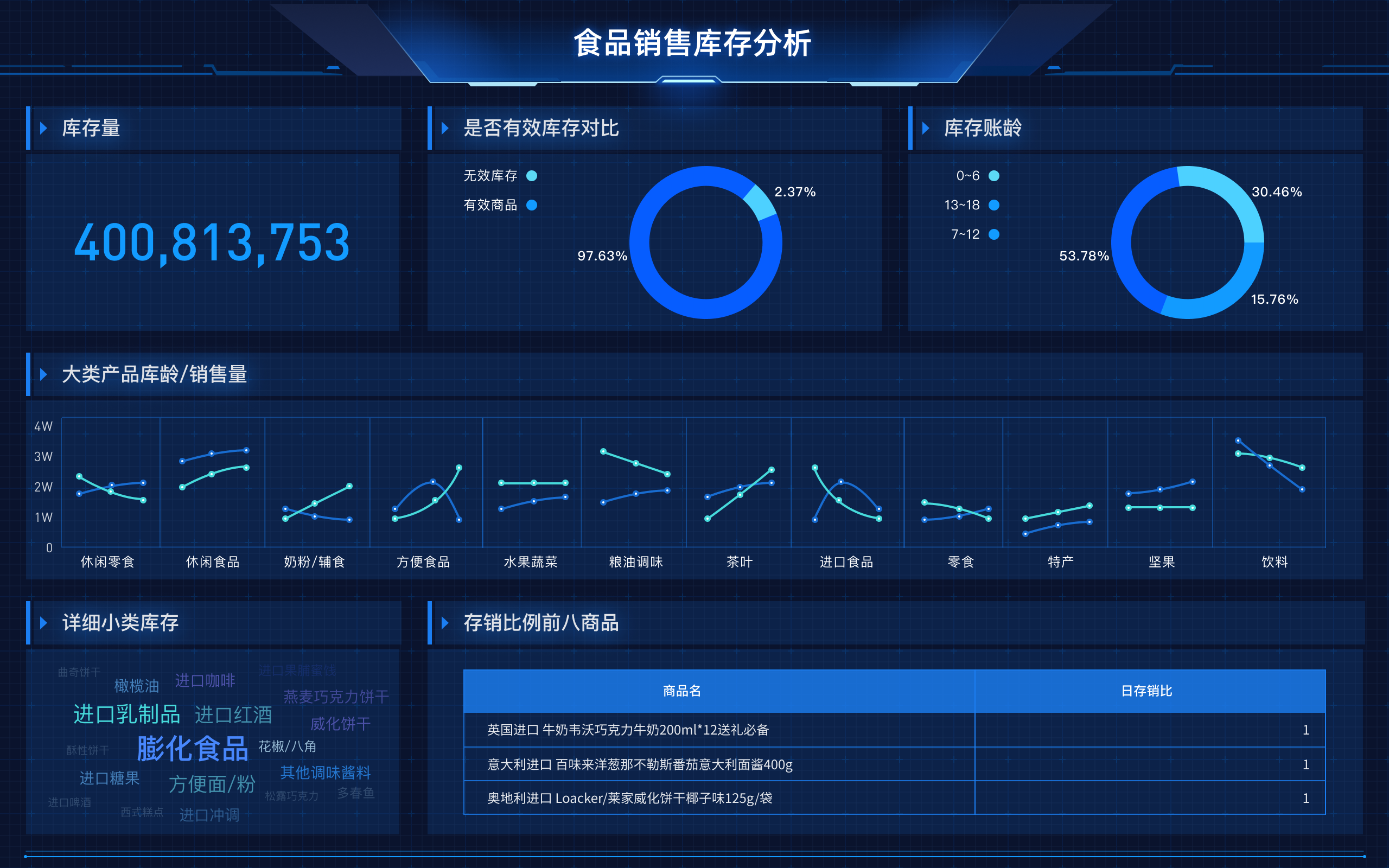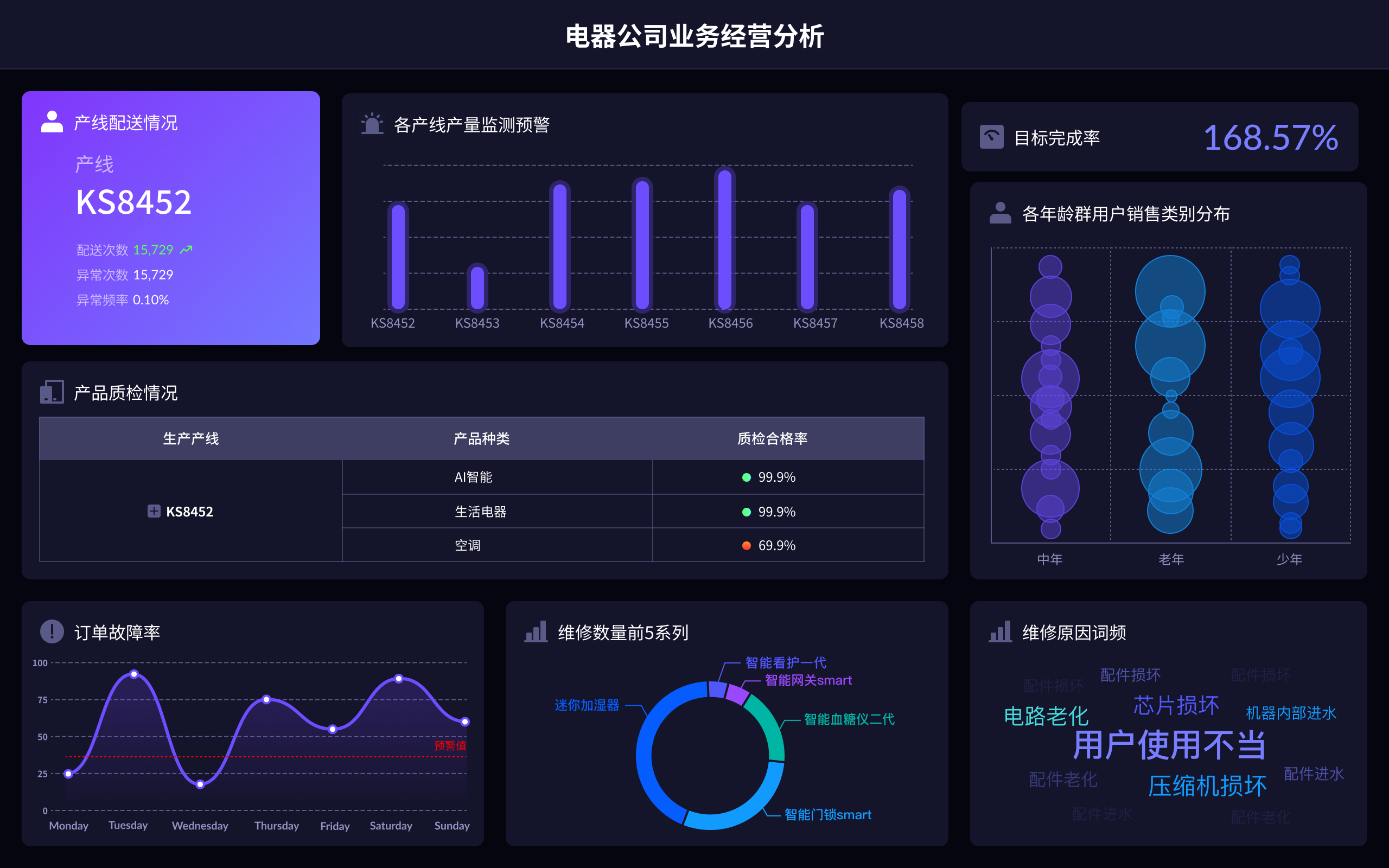
What Data is Worth Mining?
In the realm of data science and analytics, customer behavior data, financial data, operational data, social media data, and web traffic data are particularly valuable for mining. Among these, customer behavior data stands out as incredibly insightful. By analyzing patterns in customer purchases, preferences, and engagement, businesses can tailor their marketing strategies, improve customer satisfaction, and ultimately drive sales growth. For instance, understanding what products are frequently bought together can lead to effective cross-selling strategies. Additionally, customer segmentation based on behavior can help in personalizing communication and offers, thereby enhancing the overall customer experience and loyalty.
I. CUSTOMER BEHAVIOR DATA
Customer behavior data encompasses a wide range of information, including purchase history, browsing habits, product preferences, and interaction with customer service. This data is essential for understanding how customers interact with a business. By mining this data, companies can gain insights into customer needs and preferences, which can inform product development, marketing strategies, and customer service improvements. For example, a retail company might analyze purchase history to identify trends and forecast future demand, enabling better inventory management. Additionally, customer segmentation based on behavior can lead to more personalized marketing efforts, increasing the likelihood of conversion and customer retention.
II. FINANCIAL DATA
Financial data includes information about a company's revenues, expenses, profits, and other key financial metrics. This data is crucial for making informed business decisions, managing budgets, and ensuring financial stability. By mining financial data, businesses can identify cost-saving opportunities, optimize pricing strategies, and improve financial forecasting. For example, analyzing expense data might reveal areas where the company can reduce costs without sacrificing quality or efficiency. Similarly, revenue analysis can help identify the most profitable products or services, guiding investment and development efforts. Financial data mining can also support risk management by identifying potential financial threats and opportunities for growth.
III. OPERATIONAL DATA
Operational data pertains to the internal processes and activities of a business. This includes data on production processes, supply chain logistics, employee performance, and more. Mining this data can lead to significant improvements in efficiency and productivity. For example, analyzing production data can help identify bottlenecks and inefficiencies in the manufacturing process, enabling businesses to streamline operations and reduce costs. Similarly, supply chain data can reveal opportunities for optimizing logistics and inventory management, ensuring that products are delivered on time and at the lowest possible cost. Employee performance data can also be mined to identify areas for training and development, helping to improve overall workforce productivity.
IV. SOCIAL MEDIA DATA
Social media data consists of information gathered from platforms such as Facebook, Twitter, Instagram, and LinkedIn. This data includes user interactions, posts, likes, shares, and comments, providing a wealth of information about customer sentiments and trends. By mining social media data, businesses can gain insights into public perception of their brand, monitor competitor activities, and identify emerging trends. For example, sentiment analysis can help businesses understand how customers feel about their products or services, allowing them to address any negative feedback and improve customer satisfaction. Additionally, social media data can be used to identify influencers and brand advocates, who can help promote products and increase brand visibility.
V. WEB TRAFFIC DATA
Web traffic data includes information about the visitors to a company's website, such as page views, click-through rates, bounce rates, and conversion rates. This data is crucial for understanding how users interact with a website and identifying areas for improvement. By mining web traffic data, businesses can optimize their website design and content to enhance user experience and increase conversions. For example, analyzing click-through rates can reveal which pages or links are most popular, guiding content development and marketing efforts. Similarly, bounce rate analysis can help identify pages that may be causing visitors to leave the site, allowing businesses to make necessary adjustments and improve retention. Conversion rate analysis can also provide insights into the effectiveness of marketing campaigns and lead generation strategies.
VI. HEALTHCARE DATA
Healthcare data consists of patient records, treatment outcomes, medical imaging, and more. This data is invaluable for improving patient care, advancing medical research, and optimizing healthcare operations. By mining healthcare data, medical professionals can identify patterns and trends that inform diagnosis and treatment plans. For example, analyzing patient records can help identify risk factors for certain diseases, enabling early intervention and preventive care. Additionally, mining treatment outcome data can reveal the most effective therapies and procedures, guiding clinical decision-making. Healthcare data mining can also support operational improvements, such as optimizing staffing levels and resource allocation to ensure efficient and effective patient care.
VII. EDUCATIONAL DATA
Educational data includes information about student performance, attendance, behavior, and more. This data is crucial for improving educational outcomes and enhancing the learning experience. By mining educational data, educators can identify at-risk students, tailor instructional strategies, and evaluate the effectiveness of educational programs. For example, analyzing student performance data can help identify areas where students are struggling, allowing for targeted interventions and support. Additionally, mining attendance data can reveal patterns that may indicate underlying issues, such as health problems or family challenges, enabling timely assistance. Educational data mining can also inform curriculum development and teaching methods, ensuring that educational programs meet the needs of all students.
VIII. IoT DATA
Internet of Things (IoT) data encompasses information collected from connected devices, such as sensors, smart appliances, and wearable technology. This data is valuable for improving product functionality, enhancing user experience, and driving innovation. By mining IoT data, businesses can gain insights into how their products are used and identify opportunities for improvement. For example, analyzing data from smart home devices can reveal usage patterns and preferences, guiding product development and marketing efforts. Similarly, mining data from wearable technology can provide insights into user health and fitness, enabling the development of personalized wellness programs and products. IoT data mining can also support predictive maintenance, helping businesses identify and address potential issues before they become problems.
IX. ENVIRONMENTAL DATA
Environmental data includes information about weather patterns, air and water quality, and other ecological factors. This data is essential for understanding and addressing environmental challenges, such as climate change and pollution. By mining environmental data, researchers and policymakers can identify trends and develop strategies to mitigate negative impacts. For example, analyzing weather data can help predict and prepare for extreme weather events, reducing the risk of damage and loss of life. Similarly, mining air and water quality data can reveal sources of pollution and inform regulatory efforts to protect public health. Environmental data mining can also support conservation efforts by identifying at-risk ecosystems and species, guiding preservation strategies.
X. MARKET DATA
Market data consists of information about market trends, consumer preferences, and competitive dynamics. This data is crucial for making informed business decisions and staying competitive in the marketplace. By mining market data, businesses can identify emerging trends, understand customer needs, and anticipate competitor actions. For example, analyzing market trends can reveal opportunities for new products or services, guiding investment and development efforts. Similarly, mining consumer preference data can help businesses tailor their offerings to meet customer demands, increasing the likelihood of success. Competitive analysis can also provide insights into the strengths and weaknesses of competitors, informing strategic planning and positioning.
XI. SUPPLY CHAIN DATA
Supply chain data includes information about the movement of goods and materials, inventory levels, and supplier performance. This data is critical for optimizing supply chain operations and ensuring timely delivery of products. By mining supply chain data, businesses can identify inefficiencies, reduce costs, and improve overall supply chain performance. For example, analyzing inventory data can help businesses maintain optimal stock levels, reducing the risk of stockouts and overstocking. Similarly, mining supplier performance data can reveal areas for improvement, such as delivery times and quality issues, enabling businesses to negotiate better terms and improve supplier relationships. Supply chain data mining can also support demand forecasting, helping businesses anticipate customer needs and plan accordingly.
XII. ENERGY DATA
Energy data encompasses information about energy consumption, production, and efficiency. This data is vital for managing energy resources, reducing costs, and promoting sustainability. By mining energy data, businesses and utilities can identify opportunities for energy savings and efficiency improvements. For example, analyzing energy consumption data can reveal patterns and trends, guiding efforts to reduce energy use and lower costs. Similarly, mining production data can help optimize energy generation and distribution, ensuring a reliable and efficient energy supply. Energy data mining can also support the development of renewable energy sources and technologies, promoting environmental sustainability and reducing dependence on fossil fuels.
XIII. TRANSPORTATION DATA
Transportation data includes information about traffic patterns, vehicle performance, and public transit usage. This data is crucial for improving transportation systems and ensuring efficient movement of people and goods. By mining transportation data, cities and businesses can identify trends and develop strategies to enhance transportation efficiency and safety. For example, analyzing traffic data can help identify congestion hotspots and inform infrastructure improvements, reducing travel times and emissions. Similarly, mining vehicle performance data can reveal maintenance needs and improve fleet management, ensuring reliable and safe transportation services. Public transit data can also provide insights into usage patterns and rider preferences, guiding service improvements and planning.
XIV. TELECOMMUNICATIONS DATA
Telecommunications data consists of information about network performance, user behavior, and service quality. This data is essential for managing telecom networks and ensuring high-quality service for customers. By mining telecommunications data, providers can identify and address network issues, optimize service delivery, and enhance customer satisfaction. For example, analyzing network performance data can reveal areas with poor coverage or high congestion, guiding efforts to improve infrastructure and service quality. Similarly, mining user behavior data can help providers understand customer needs and preferences, enabling personalized service offerings and targeted marketing campaigns. Service quality data can also support efforts to resolve customer complaints and improve overall satisfaction.
XV. RETAIL DATA
Retail data includes information about sales, inventory, customer preferences, and more. This data is crucial for optimizing retail operations and improving customer experience. By mining retail data, businesses can identify trends, optimize inventory management, and enhance marketing efforts. For example, analyzing sales data can reveal popular products and seasonal trends, guiding inventory planning and promotions. Similarly, mining customer preference data can help businesses tailor their offerings to meet customer demands, increasing the likelihood of sales. Inventory data can also support efforts to reduce stockouts and overstocking, ensuring that products are available when and where customers need them.
XVI. HUMAN RESOURCES DATA
Human resources data encompasses information about employee performance, satisfaction, recruitment, and more. This data is essential for managing workforce and improving organizational performance. By mining HR data, businesses can identify trends and develop strategies to enhance employee engagement and productivity. For example, analyzing performance data can reveal top performers and areas for improvement, guiding training and development efforts. Similarly, mining satisfaction data can help identify factors that influence employee morale and retention, enabling targeted interventions to improve workplace culture. Recruitment data can also provide insights into the effectiveness of hiring practices and inform efforts to attract and retain top talent.
XVII. REAL ESTATE DATA
Real estate data includes information about property values, market trends, and buyer preferences. This data is crucial for making informed investment decisions and understanding market dynamics. By mining real estate data, investors and developers can identify opportunities and risks, guiding investment and development efforts. For example, analyzing property value data can reveal areas with high appreciation potential, informing investment strategies. Similarly, mining market trend data can help identify emerging neighborhoods and development opportunities, guiding planning and development efforts. Buyer preference data can also provide insights into what features and amenities are most desirable, enabling developers to tailor their projects to meet market demands.
XVIII. LEGAL DATA
Legal data consists of information about case law, regulations, and legal precedents. This data is essential for legal research and ensuring compliance with laws and regulations. By mining legal data, law firms and businesses can identify relevant cases and precedents, inform legal strategies, and ensure compliance with regulatory requirements. For example, analyzing case law data can help identify trends and patterns in legal decisions, guiding litigation strategies and risk management efforts. Similarly, mining regulatory data can reveal changes and updates in laws and regulations, ensuring that businesses remain compliant and avoid legal issues. Legal data mining can also support efforts to streamline legal research and improve efficiency.
XIX. AGRICULTURAL DATA
Agricultural data includes information about crop yields, soil conditions, weather patterns, and more. This data is crucial for optimizing agricultural practices and ensuring food security. By mining agricultural data, farmers and researchers can identify trends and develop strategies to improve crop production and sustainability. For example, analyzing crop yield data can reveal factors that influence productivity, guiding efforts to optimize planting and harvesting practices. Similarly, mining soil condition data can help identify areas that need improvement, such as nutrient levels and soil health, informing fertilization and soil management efforts. Weather data can also provide insights into climate patterns and inform efforts to mitigate the impact of extreme weather events on crop production.
XX. SPORTS DATA
Sports data encompasses information about player performance, game statistics, and fan engagement. This data is valuable for improving team performance, enhancing fan experience, and driving revenue. By mining sports data, teams and organizations can identify trends and develop strategies to improve performance and engagement. For example, analyzing player performance data can reveal strengths and weaknesses, guiding training and development efforts. Similarly, mining game statistics can provide insights into team performance and inform game strategies. Fan engagement data can also help identify factors that influence attendance and viewership, enabling targeted marketing and promotional efforts. Sports data mining can also support efforts to enhance fan experience through personalized content and interactive features.
By focusing on these diverse and valuable data sources, businesses and organizations can unlock a wealth of insights and opportunities for growth and improvement. Each type of data offers unique perspectives and can inform strategies across various domains, ultimately driving success and innovation.
相关问答FAQs:
What types of data are worth mining?
Data mining is a powerful technique used to extract meaningful insights from large sets of data. The types of data that are particularly valuable for mining can vary significantly depending on the industry and specific goals. Here are some key categories worth exploring:
-
Customer Data: Customer behavior data, such as purchasing patterns, preferences, and demographics, is invaluable for businesses. By analyzing this data, companies can tailor their marketing strategies, improve customer service, and enhance product offerings. For example, e-commerce platforms can use data mining to identify which products are frequently bought together, allowing them to create bundled offers or personalized recommendations.
-
Social Media Data: The vast amount of information generated on social media platforms offers rich insights into public sentiment, brand perception, and trends. Analyzing social media interactions can help businesses understand customer opinions, respond to feedback, and identify potential brand advocates. Tools that track hashtags, mentions, and engagement metrics can provide a deeper understanding of audience behavior and preferences.
-
Operational Data: In industries such as manufacturing or logistics, operational data—including production metrics, supply chain information, and maintenance records—can reveal inefficiencies and areas for improvement. By mining this data, organizations can optimize processes, reduce costs, and improve overall performance. Predictive maintenance models, for example, can forecast equipment failures before they occur, saving time and resources.
-
Financial Data: Financial institutions can benefit significantly from data mining by analyzing transaction records, credit histories, and market trends. This information can be used to identify fraudulent activities, assess risk, and develop investment strategies. By leveraging machine learning algorithms, banks can create more accurate credit scoring models and improve customer segmentation.
-
Healthcare Data: In the healthcare sector, patient records, treatment histories, and clinical trial results hold critical insights. Data mining can help identify patterns in disease outbreaks, assess treatment efficacy, and improve patient outcomes. Predictive analytics can also be used to anticipate patient needs and optimize resource allocation in hospitals.
-
IoT Data: The Internet of Things (IoT) generates vast amounts of data from interconnected devices. This data can be mined to monitor equipment performance, enhance user experiences, and drive innovation in product development. For example, smart home devices can provide insights into usage patterns, leading to the development of more efficient energy solutions.
-
Web and Clickstream Data: Analyzing website traffic and user interactions can help businesses understand how visitors engage with their content. This data can inform website design, content strategy, and marketing campaigns. By tracking click patterns, businesses can identify which areas of their site attract the most attention and optimize them for better conversion rates.
-
Text Data: Unstructured data, such as customer feedback, reviews, or support tickets, can be mined for sentiment analysis and trend identification. Natural language processing (NLP) techniques can extract valuable insights from this text, helping organizations understand customer needs and improve their products and services.
-
Geospatial Data: Geographic information systems (GIS) data can reveal insights related to location-based trends, market opportunities, and customer segmentation. Businesses can analyze demographic data alongside geographic information to target specific markets effectively. For instance, retail companies can use geospatial data to identify optimal store locations based on population density and consumer behavior.
-
Competitor Data: Understanding competitor strategies through data mining can provide a competitive edge. Analyzing market trends, pricing strategies, and customer reviews of competitors allows businesses to adjust their strategies accordingly. Tools like web scraping can help gather publicly available data for analysis.
In conclusion, the value of data mining lies in its ability to uncover hidden patterns and insights across a diverse range of datasets. Organizations that effectively harness these data types can drive innovation, enhance decision-making, and ultimately achieve greater success in their respective fields.
How can businesses effectively mine data?
To effectively mine data, businesses need to adopt a systematic approach that encompasses data collection, processing, analysis, and interpretation. Here are some essential steps to consider:
-
Define Clear Objectives: Before initiating a data mining project, organizations must establish clear objectives. Whether the goal is to improve customer retention, optimize operational efficiency, or enhance product offerings, defining the desired outcomes will guide the data mining process.
-
Data Collection: Gathering the right data is crucial for successful mining. Businesses should identify relevant data sources, which may include internal databases, third-party data providers, or public datasets. Ensuring data quality during the collection phase is essential, as inaccurate or incomplete data can lead to misleading results.
-
Data Cleaning and Preprocessing: Raw data often contains inconsistencies, duplicates, or missing values. Data cleaning involves identifying and rectifying these issues to ensure the dataset is accurate and reliable. Preprocessing may also involve normalizing data, converting categorical variables into numerical formats, or removing irrelevant information.
-
Choosing the Right Tools and Techniques: Various data mining tools and techniques are available, ranging from statistical analysis software to machine learning algorithms. Organizations should select the appropriate tools based on their specific needs, the complexity of the data, and the skills of their team. Popular tools include Python, R, SQL, and specialized software like RapidMiner or KNIME.
-
Data Analysis: Once the data is prepared, the analysis phase begins. This involves applying various algorithms to uncover patterns, correlations, and insights. Techniques such as clustering, classification, regression, and association rule mining can be employed depending on the objectives. Visualization tools can also be used to present findings in a comprehensible manner.
-
Interpretation and Action: Analyzing data is only the first step; interpreting the results is crucial for deriving actionable insights. Businesses must understand the implications of their findings and develop strategies to implement changes based on the insights gained. For instance, if data mining reveals a decline in customer satisfaction, the organization should take steps to address the underlying issues.
-
Continuous Monitoring and Improvement: Data mining is not a one-time endeavor; it requires ongoing monitoring and refinement. Organizations should regularly assess the effectiveness of their data mining efforts and make adjustments as necessary. This may involve updating data sources, refining algorithms, or revisiting objectives.
-
Ethical Considerations: As businesses increasingly rely on data mining, ethical considerations become paramount. Organizations must ensure they comply with data privacy regulations, such as GDPR or CCPA, and maintain transparency in how they use customer data. Building trust with customers by safeguarding their information is vital for long-term success.
By following these steps, businesses can harness the power of data mining to drive insights and improve decision-making across their operations.
What challenges do organizations face in data mining?
While data mining offers numerous benefits, organizations often encounter various challenges that can hinder their efforts. Recognizing and addressing these challenges is essential for successful data mining initiatives. Some common obstacles include:
-
Data Quality Issues: Poor data quality is one of the most significant challenges in data mining. Inaccurate, incomplete, or outdated data can lead to erroneous conclusions and misguided business decisions. Organizations must invest time and resources in data cleaning and validation to ensure the integrity of their datasets.
-
Data Silos: Many organizations struggle with data silos, where information is stored in isolated systems or departments. This fragmentation can hinder data accessibility and limit the ability to conduct comprehensive analyses. Breaking down these silos requires fostering a culture of collaboration and implementing integrated data management systems.
-
Skill Gaps: Effective data mining requires specialized skills in areas such as statistics, data analysis, and programming. Many organizations face challenges in finding and retaining qualified data scientists or analysts. Investing in employee training and development or collaborating with external experts can help bridge these skill gaps.
-
Scalability: As data volumes continue to grow exponentially, organizations may struggle to scale their data mining efforts. Large datasets can pose challenges in terms of storage, processing power, and analysis. Leveraging cloud computing and big data technologies can help organizations handle these scalability issues effectively.
-
Changing Data Landscape: The data landscape is constantly evolving, with new sources, formats, and technologies emerging regularly. Organizations must stay abreast of these changes and be adaptable in their data mining strategies. This may involve continuously updating tools, methodologies, and data sources to remain competitive.
-
Integration of Diverse Data Sources: Data may come from various sources, including structured databases, unstructured text, and real-time streams. Integrating these diverse data types for analysis can be complex. Organizations need robust data integration techniques and tools to ensure seamless analysis across different formats.
-
Ethical and Privacy Concerns: With growing scrutiny over data privacy and ethical considerations, organizations must navigate complex regulations regarding data usage. Ensuring compliance while still extracting valuable insights can be a delicate balance. Implementing transparent data practices and prioritizing customer consent is essential to address these concerns.
-
Resistance to Change: Cultural resistance within organizations can impede the adoption of data-driven decision-making. Employees may be hesitant to embrace data mining initiatives, fearing job displacement or disruptions to established processes. Effective change management strategies, including communication and training, can help foster a data-driven culture.
-
Interpretation of Results: Even after successful data mining, interpreting the results can be challenging. Organizations must ensure that stakeholders understand the insights and their implications. This often requires effective communication and collaboration between data analysts and decision-makers.
-
Cost Considerations: Implementing data mining initiatives can involve significant costs, including software, hardware, and personnel. Organizations must carefully evaluate their budgets and develop a clear return on investment (ROI) strategy to justify these expenses.
By proactively addressing these challenges, organizations can enhance their data mining capabilities and unlock the full potential of their data assets. Embracing a holistic approach that combines technology, skills, and ethical considerations will ultimately lead to more successful data-driven outcomes.
本文内容通过AI工具匹配关键字智能整合而成,仅供参考,帆软不对内容的真实、准确或完整作任何形式的承诺。具体产品功能请以帆软官方帮助文档为准,或联系您的对接销售进行咨询。如有其他问题,您可以通过联系blog@fanruan.com进行反馈,帆软收到您的反馈后将及时答复和处理。


